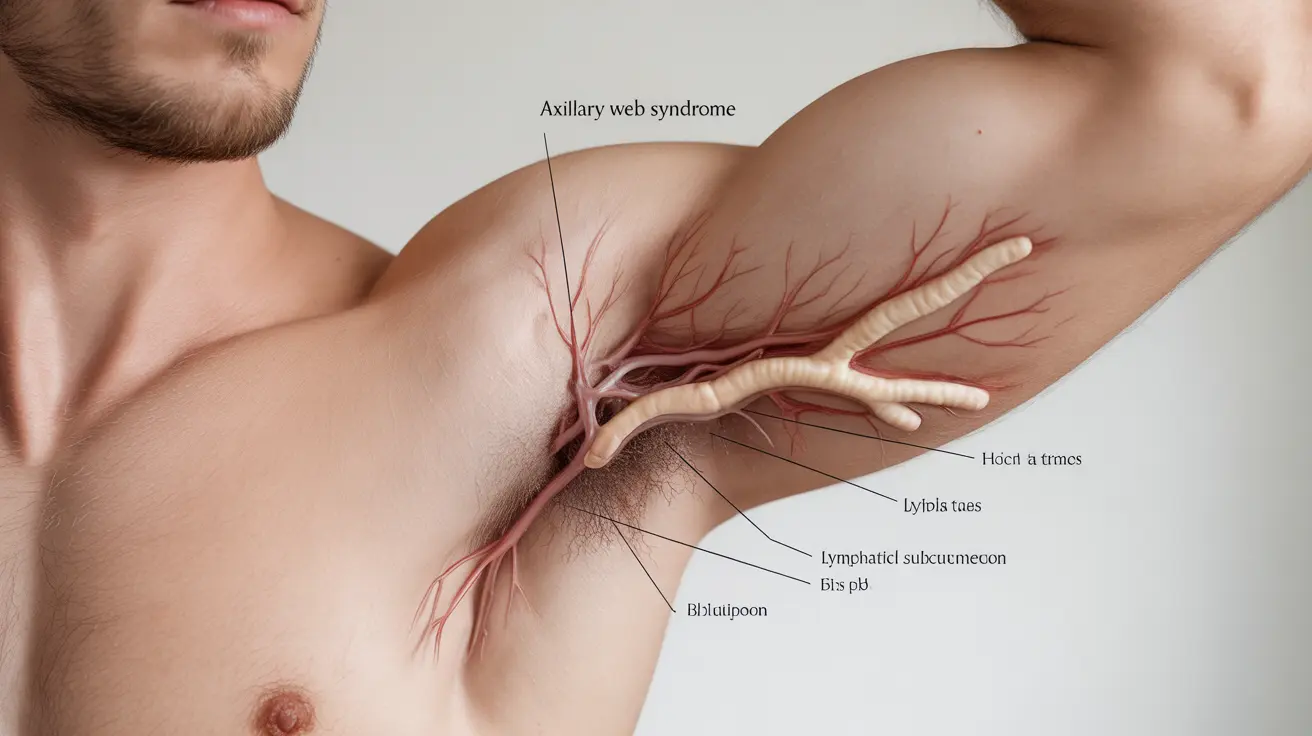After breast cancer surgery, some patients may notice a concerning development: tight, rope-like structures appearing under their armpit. This condition, known as axillary web syndrome or cording, can cause discomfort and limit arm movement. Understanding this common post-surgical complication is crucial for proper management and recovery.
While the appearance of these cord-like veins under the armpit can be alarming, it's important to know that this condition is generally temporary and treatable. This comprehensive guide will explore the causes, symptoms, and treatment options available to help you navigate this challenging aspect of recovery.
What Causes Cord-Like Veins Under the Armpit?
Axillary web syndrome typically develops as a result of trauma to the lymphatic system during breast cancer surgery, particularly when lymph nodes are removed. The body's healing response can lead to inflammation and scarring of the lymphatic vessels and surrounding connective tissue, creating visible and palpable cords under the skin.
Common triggering factors include:
- Sentinel lymph node biopsy
- Axillary lymph node dissection
- Trauma to the lymphatic vessels
- Post-surgical inflammation
Recognizing the Signs and Symptoms
The condition typically manifests within days to weeks after surgery. Key indicators include:
- Visible rope-like structures under the skin
- Tightness or pulling sensation in the armpit
- Pain when raising or extending the arm
- Limited range of motion in the affected arm
- Discomfort during everyday activities
Treatment Approaches and Management
Physical Therapy Interventions
Physical therapy plays a crucial role in managing axillary web syndrome. A qualified therapist can guide patients through specific exercises and techniques designed to:
- Improve flexibility and range of motion
- Reduce pain and discomfort
- Break down the cord-like structures
- Restore normal arm function
Self-Care Measures
Several self-care strategies can complement professional treatment:
- Gentle stretching exercises
- Warm compresses to reduce discomfort
- Massage techniques (as directed by healthcare providers)
- Gradual return to normal activities
Recovery Timeline and Expectations
The healing process varies among individuals, but most patients see improvement within 2-3 months with appropriate treatment. Some may experience complete resolution of symptoms within this timeframe, while others might require longer-term management.
Factors affecting recovery include:
- Extent of surgical intervention
- Individual healing capacity
- Consistency with prescribed exercises
- Early intervention and treatment
Frequently Asked Questions
What causes a cord-like vein or band to appear under the armpit after breast cancer surgery?
The cord-like vein appears due to inflammation and scarring of lymphatic vessels and surrounding tissue following breast cancer surgery, particularly when lymph nodes are removed. This reaction is part of the body's healing response to surgical trauma.
What are the common symptoms of axillary web syndrome and how can I recognize it?
Common symptoms include visible rope-like structures under the skin, pain when raising the arm, restricted shoulder movement, and a pulling sensation in the armpit area. These symptoms typically develop within weeks after surgery.
How is axillary web syndrome treated and what exercises help reduce the cord and pain?
Treatment primarily involves physical therapy, including gentle stretching exercises, range-of-motion activities, and manual therapy techniques. Specific exercises might include shoulder rolls, wall climbs, and controlled arm stretches, all performed under professional guidance.
Can physical therapy fully restore arm movement and relieve pain caused by axillary web syndrome?
Yes, physical therapy can significantly improve arm movement and reduce pain for most patients. While the extent of recovery may vary, many achieve full restoration of arm function through consistent therapy and appropriate exercises.
Is axillary web syndrome permanent, and how long does it typically take to heal with treatment?
Axillary web syndrome is typically not permanent. With proper treatment, most patients see significant improvement within 2-3 months. Complete resolution often occurs within this timeframe, though some cases may require longer treatment periods.




